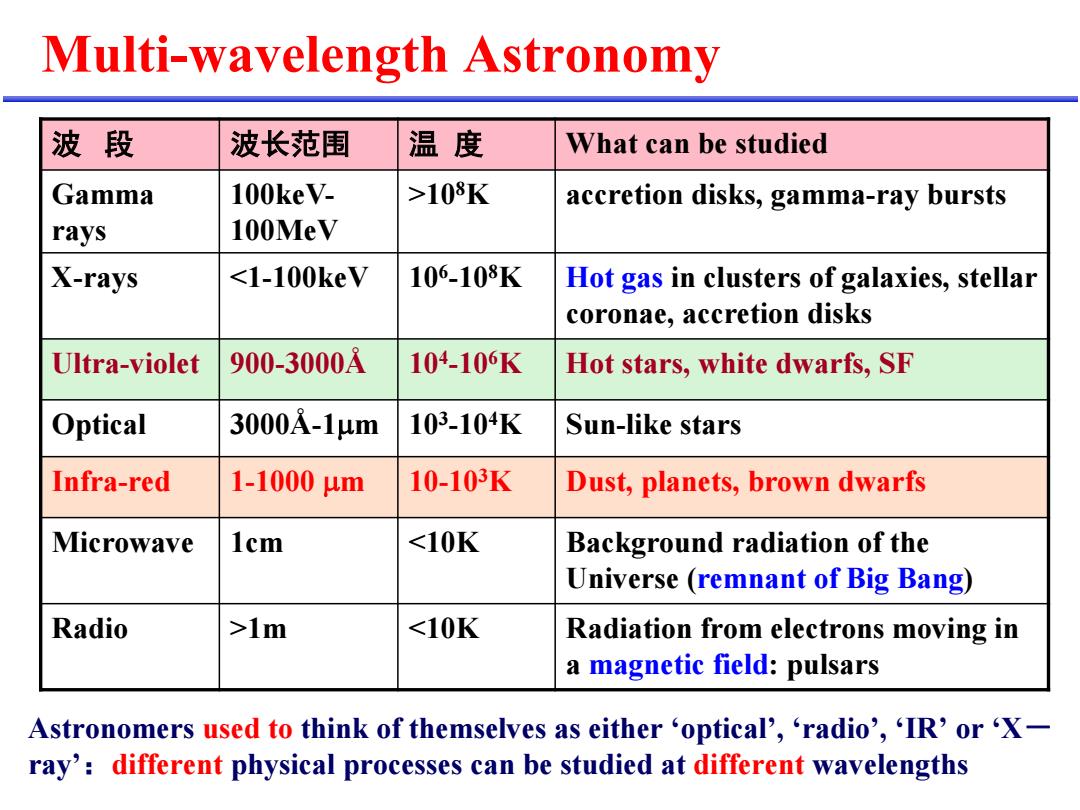正在加载图片...

Multi-wavelength Astronomy 波段 波长范围 温度 What can be studied Gamma 100keV- >108K accretion disks,gamma-ray bursts rays 100MeV X-rays <1-100keV 106.-108K Hot gas in clusters of galaxies,stellar coronae,accretion disks Ultra-violet 900-3000A 104.10K Hot stars,white dwarfs,SF Optical 3000A-1um 103.104K Sun-like stars Infra-red 1-1000m 10-103K Dust,planets,brown dwarfs Microwave 1cm <10K Background radiation of the Universe(remnant of Big Bang) Radio >1m <10K Radiation from electrons moving in a magnetic field:pulsars Astronomers used to think of themselves as either 'optical',radio','IR'or X- ray':different physical processes can be studied at different wavelengthsMulti-wavelength Astronomy ' ( 'EFG H I What can be studied Gamma rays 100keV- 100MeV >108K accretion disks, gamma-ray bursts X-rays <1-100keV 106-108K Hot gas in clusters of galaxies, stellar coronae, accretion disks Ultra-violet 900-3000Å 104-106K Hot stars, white dwarfs, SF Optical 3000Å-1µm 103-104K Sun-like stars Infra-red 1-1000 µm 10-103K Dust, planets, brown dwarfs Microwave 1cm <10K Background radiation of the Universe (remnant of Big Bang) Radio >1m <10K Radiation from electrons moving in a magnetic field: pulsars Astronomers used to think of themselves as either ‘optical’, ‘radio’, ‘IR’ or ‘XJ ray’$different physical processes can be studied at different wavelengths